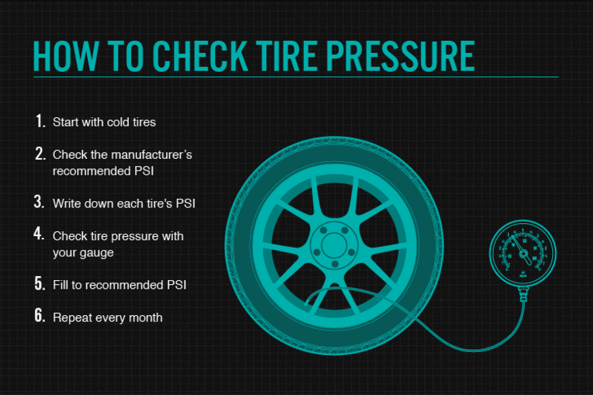General Help
Get information about our website or Droom services
When we talk about car tyre pressure, it is basically a measurement of how much air is there in your tyre. It further ensures that a correct level of grip is maintained on the road surface. This is commonly expressed as PSI or Pounds per Square Inch. It is very important to maintain proper tyre inflation. Furthermore, if a tyre is properly inflated then it will provide longer life, better fuel efficiency, quicker steering response and a smooth ride. In case the tyre is underinflated or overinflated, it will lead to a dozen of issues such as poor mileage and possible tyre failure. So, it is mandatory to keep a check on your tyre pressure on a monthly basis.

Items required to check the tyre pressure:
Here we have explained the whole procedure in five simple steps.
Step 1: Check if the tyre is cold or not
You have to make sure the tyre is cold and this can be achieved when the vehicle has been parked for more than 3 hours or it has been driven less than a mile at a moderate speed.
Step 2: Check the PSI as recommended by the manufacturer
PSI stands for Pounds per Square Inch. First, you need to find out the standard cold tire inflation pressure. For that, you need to check either the vehicle owner’s manual or on the inside part of the driver’s side door. In case you are still unable to find it then contact your vehicle dealer, manufacturer, or a tyre professional. After this, you will have to write down the PSI for each tyre. Remember that your front and rear tyres require different pressure levels.
Step 3: Check tyre pressure with the gauge
Now the next step is to check the pressure in the tyres using a gauge. For that, you need to first unscrew the valve stem cap from the valve stem on the tyre. Now place the pressure gauge on the valve stem and press it down in such a way that the hissing sound should disappear. If there is still a hissing sound, then the gauge is not tight and it will not provide an accurate reading. If you are using a traditional gauge, a small bar will be pushed out from the bottom of the gauge due to the air pressure. The measurement units will be displayed on the bar. In case you are using a digital gauge then the reading will be shown on the screen itself. Repeat the whole process for all four tyres. Do not forget to note down the reading of each tyre.
Step 4: Replacement of the valve stem cap
Make sure that after checking the pressure of all the tyres, the readings are the same as the manual’s specifications. In case they differ, you will have to fill the air in the tyres. Furthermore, you can use an air compressor to refill any tyre with low pressure. Once the tyres have been filled with air, use the gauge to check the pressure again. In case the tyre has been overfilled, you can let some air back out. If your tyre is overinflated, avoid driving as it would result in premature air, decreased traction, and decreased impact absorption.
Step 5: Always keep a check on tyre pressure
Make sure that you repeat the above-mentioned process monthly. If you regularly check your tyre pressure, then you will never dip far below the optimal PSI.
Image Source: bridgestonetire.com
Read Also: What to buy? A new or a used Car